Fox News Flash top entertainment headlines November 2
Fox News Flash top entertainment and celebrity headlines are here.
When Charlie Chaplin left America for the U.K. in 1952 to promote his film "Limelight," the actor’s reentry papers were revoked, and he spent the rest of his life in exile.
The silent movie star, best known for portraying his beloved character "The Tramp," is now the subject of a new book by Scott Eyman, "Charlie Chaplin vs. America: When Art, Sex, and Politics Collided." It explores Chaplin’s fall from grace, and how he spent his final years in Switzerland before dying in 1977 at age 88.
"Writing about Charlie Chaplin is like writing about Winston Churchill — there are dozens of books about him," Eyman told Fox News Digital.
'30S STAR'S SHOCKING DEATH STILL HAUNTS HOLLYWOOD, AUTHOR SAYS: 'SHE DIDN'T DROWN IN HER TOILET'
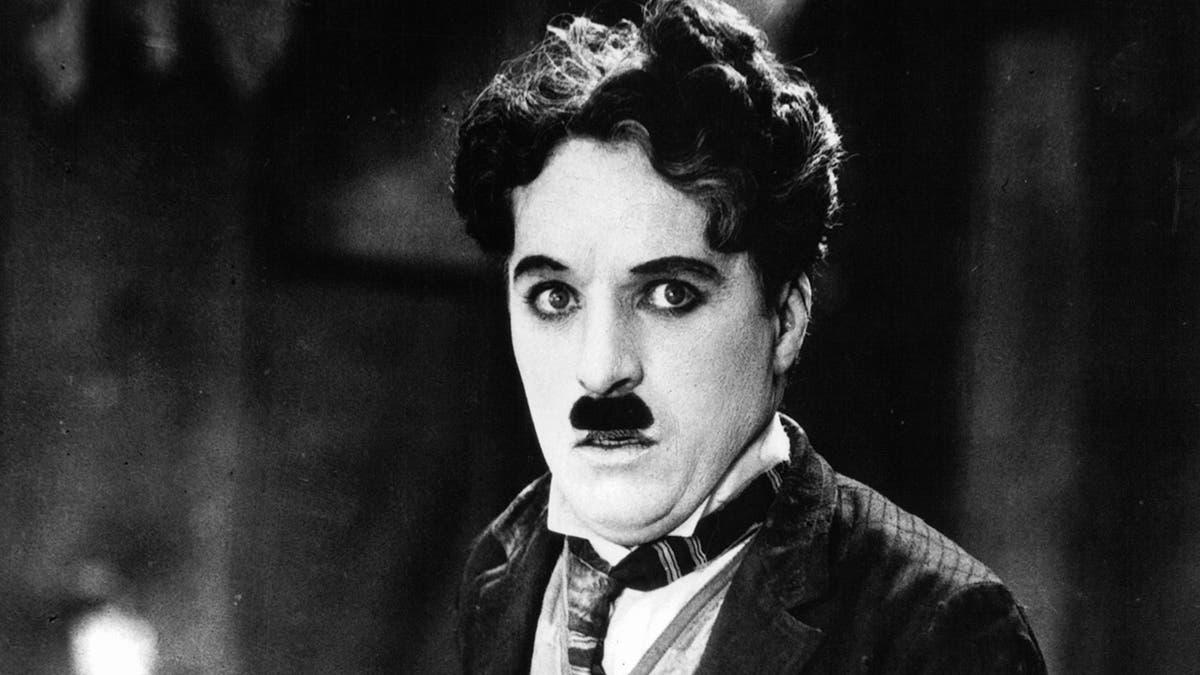
Charles Chaplin is the subject of a new book by author and film historian Scott Eyman. (United Artists/Getty Images)
"But what hasn’t been closely examined was probably the most crucial period of his life when his reentry permit was yanked by the United States, and he was essentially a man without a country."
Eyman spoke to numerous sources for his book, including Chaplin’s son Sydney, daughter Geraldine, and Chaplin’s assistant.

Charlie Chaplin in London, circa 1972. He died in 1977. (William Lovelace/Daily Express/Hulton Archive/Getty Images)
"What surprised me the most was just how self-contained Chaplin was," Eyman explained. "He did not have a wide social circle. He had very few intimate friends. He had one best friend, actor Douglas Fairbanks Sr., who died in 1939 at age 56. There was nobody to replace him and Chaplin didn’t try. He did have people who worked for him for 30, 40 years. To have a job with Chaplin was basically to have a job for a lifetime. He had a small circle of acquaintances, but like many comedians, he tended to entertain in social situations rather than be with people."
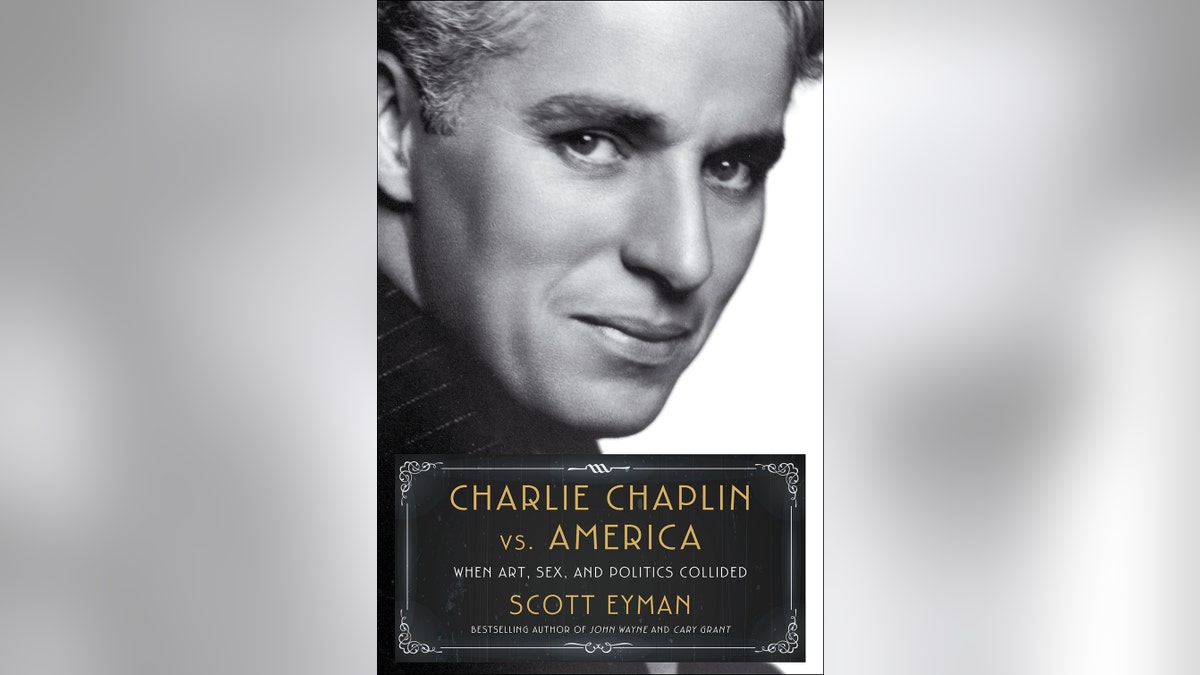
Scott Eyman's book, "Charlie Chaplin vs. America: When Art, Sex, and Politics Collided," was published on Halloween. (Simon & Schuster)
"He was closest to his wife Oona, who was his soulmate," Eyman added.
As a star, Chaplin’s affairs with young women made headlines in gossip columns. Settling down didn’t help matters.
"His first two wives were both under the age of 18, which was the age of consent in California at the time," Eyman explained. "His last wife Oona was also 18 when they married… The general tone that was established in the popular press was that Chaplin was a loose degenerate…. Something that was also beyond Chaplin’s control was his physical appearance. He began to go gray in his 30s, and by the time he was 50, he had snow-white hair. He looked 65, 70 when he was just 50 because of his white hair. So it seemed like he was far older than his actual age… It made the age differences between his wives even more extreme."
CLICK HERE TO GET THE FOX NEWS APP

British comic actor and film director Charles Chaplin (1889-1977) in character as The Tramp. (Hulton Archive/Getty Images)
"While he was interested to an extent in young girls, there were plenty of age-appropriate relationships he had too that nobody was incensed by," Eyman clarified. "So he wasn’t exclusively attracted to young girls."
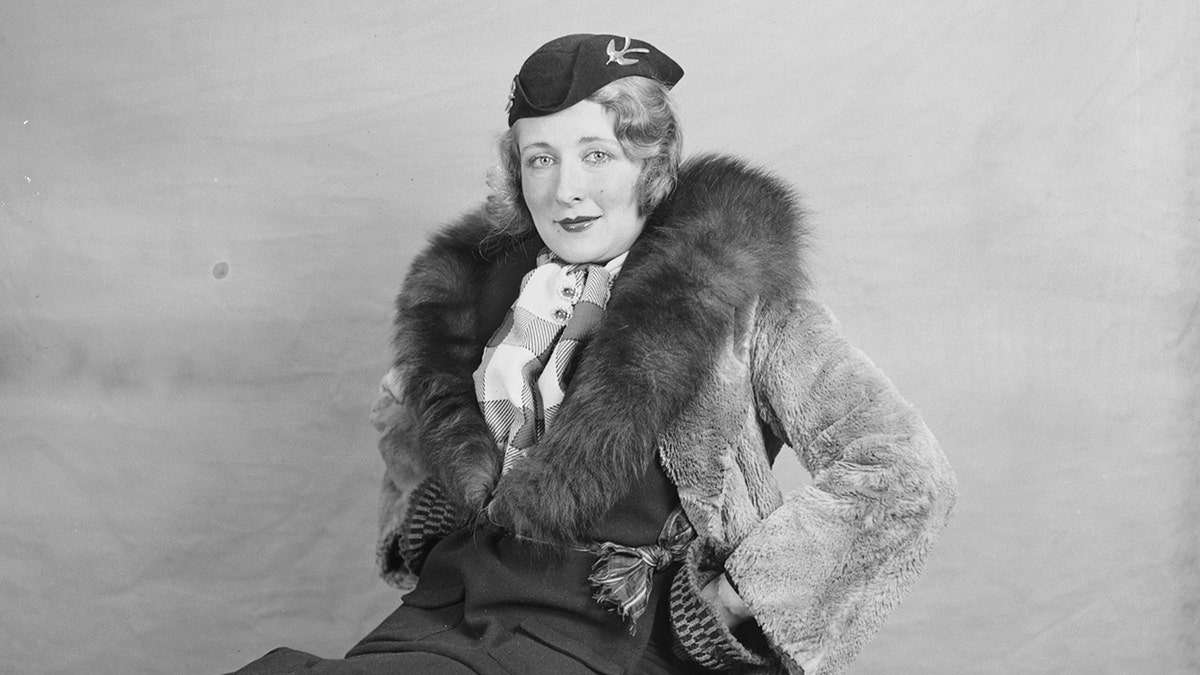
Charlie Chaplin was married to Mildred Harris from 1918 to 1920. (Getty Images)
Chaplin was married four times. The book noted he married his first wife, Mildred Harris, in 1918. The 17-year-old told him she was pregnant and Chaplin was at risk of imprisonment. The marriage ended in 1920 because, according to Fairbanks, she was having an affair.
His second wife, actress Lita Grey, was hired in 1924 to play his leading lady in "The Gold Rush" before she turned 16. Later that year, Grey told Chaplin she was pregnant, and they married. It ended in 1927.
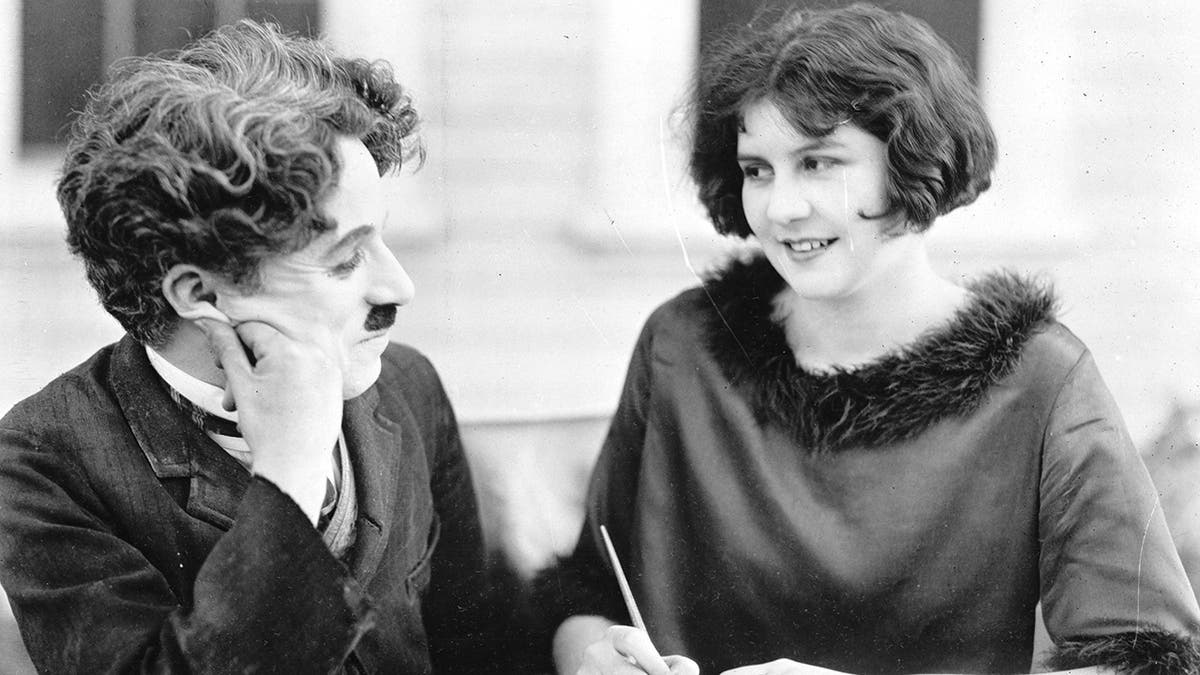
Charlie Chaplin was married to Lita Grey from 1924 to 1927. (NY Daily News Archive via Getty Images)
During an explosive divorce, Grey accused Chaplin of "seduction of a minor, statutory rape, perversion, adultery, soliciting abortions and murderous threats." Her complaint also alleged that Chaplin had affairs with numerous actresses.
The complaint specified that he had "solicited, urged and demanded that plaintiff submit to, perform and commit such acts and things for the gratification of defendant’s said abnormal, unnatural, perverted and degenerated sexual desires, as to be too revolting, indecent and immoral to set forth in detail in this complaint."
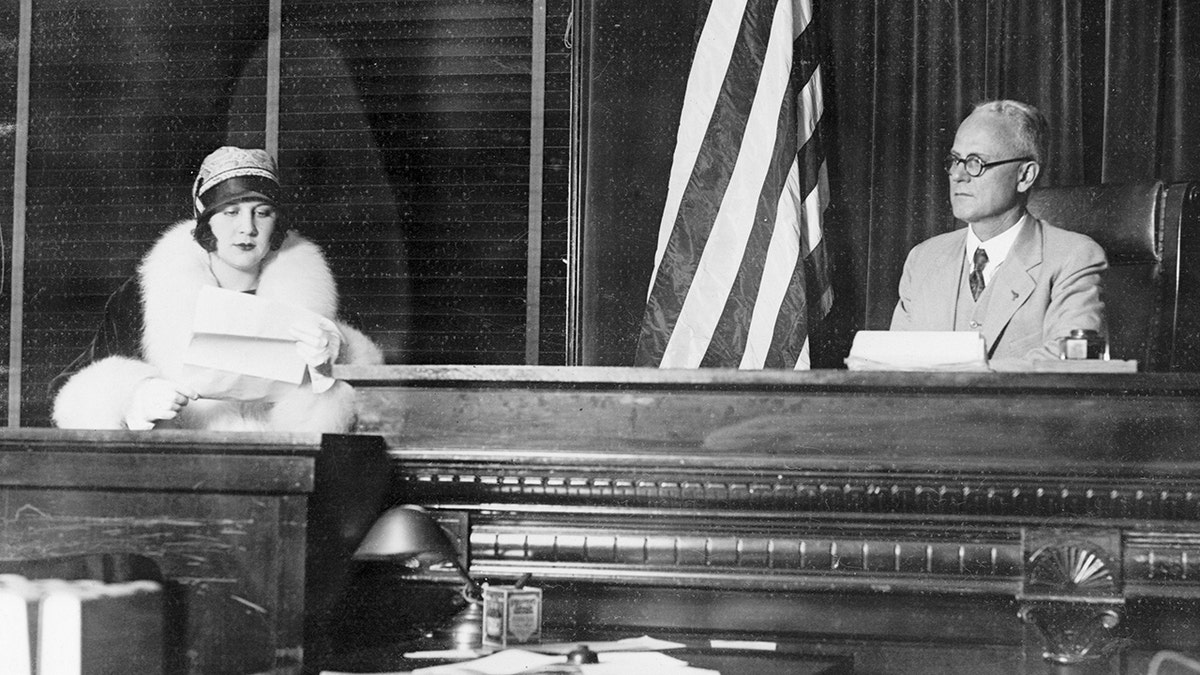
Lita Chaplin on the stand in Superior Court in Los Angeles. (Getty Images)
The book noted that while Grey accused Chaplin "of things both factual and fantastic," he was forced to stop production of his film "The Circus" for eight months. He suffered a nervous breakdown. The divorce cost Chaplin $950,000 — $650,000 for Grey, $100,000 in trust for their two sons, and court costs. It was the largest divorce settlement in California history up to that time. Chaplin would later say, "I loved all the women in my life except her."
"Occasionally Chaplin would become involved with age-appropriate women… but they coexisted with his attraction to teenagers," the book noted. Chaplin was "terrified of sexual diseases" and "would adopt extreme — and unspecific — measures to avoid it."
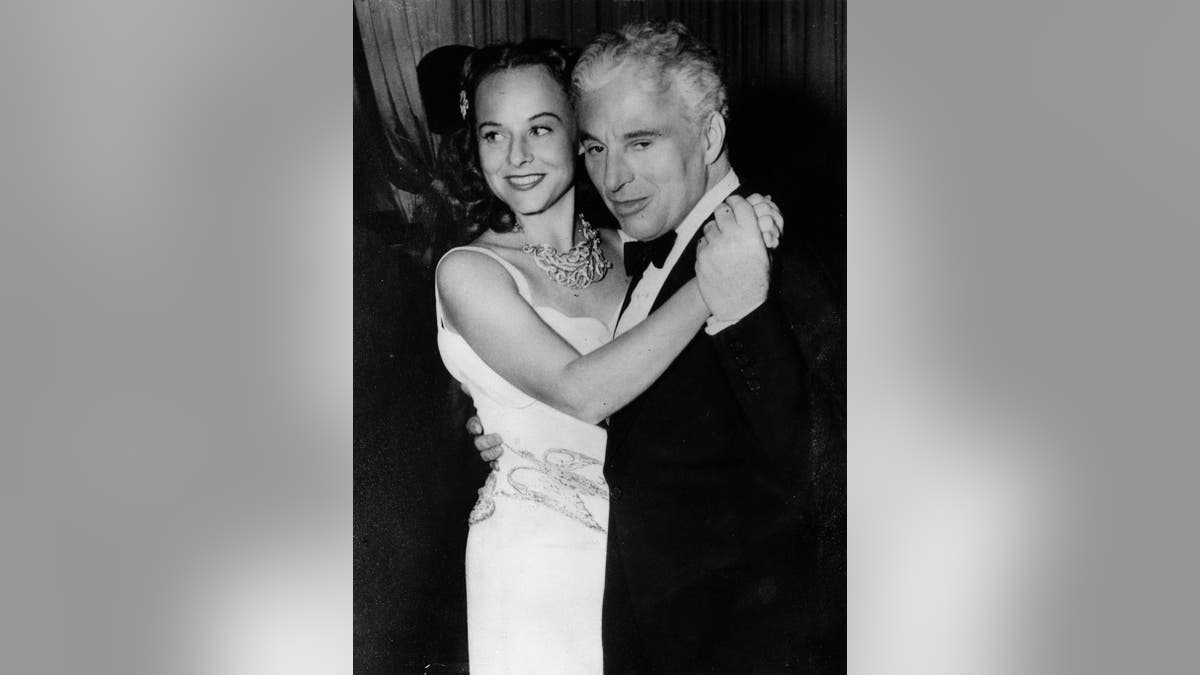
Charlie Chaplin with actress Paulette Goddard (1914-1990), his wife from 1936 to 1942, in New York City. (Keystone/Getty Images)
Chaplin married actress Paulette Goddard in 1936. According to the book, "for a time, she made him happier than any other woman ever had." He had split up with Goddard in 1941 when the 52-year-old met 21-year-old Joan Berry, billed as "Joan Barry." Chaplin wrote in his memoir that he was "only interested in recreational sex when not in his obsessive-compulsive work mode." The romance was tumultuous, and Chaplin accused Barry of having an affair with oil magnate J. Paul Getty.
LIKE WHAT YOU’RE READING? CLICK HERE FOR MORE ENTERTAINMENT NEWS

Charlie Chaplin was in his 50s when he had an affair with the 21-year-old Joan Barry. (Getty Images)
When Chaplin and Barry broke up, the book said she showed up at his house with a gun intending, she said, to kill herself. Barry alleged they later had sex.
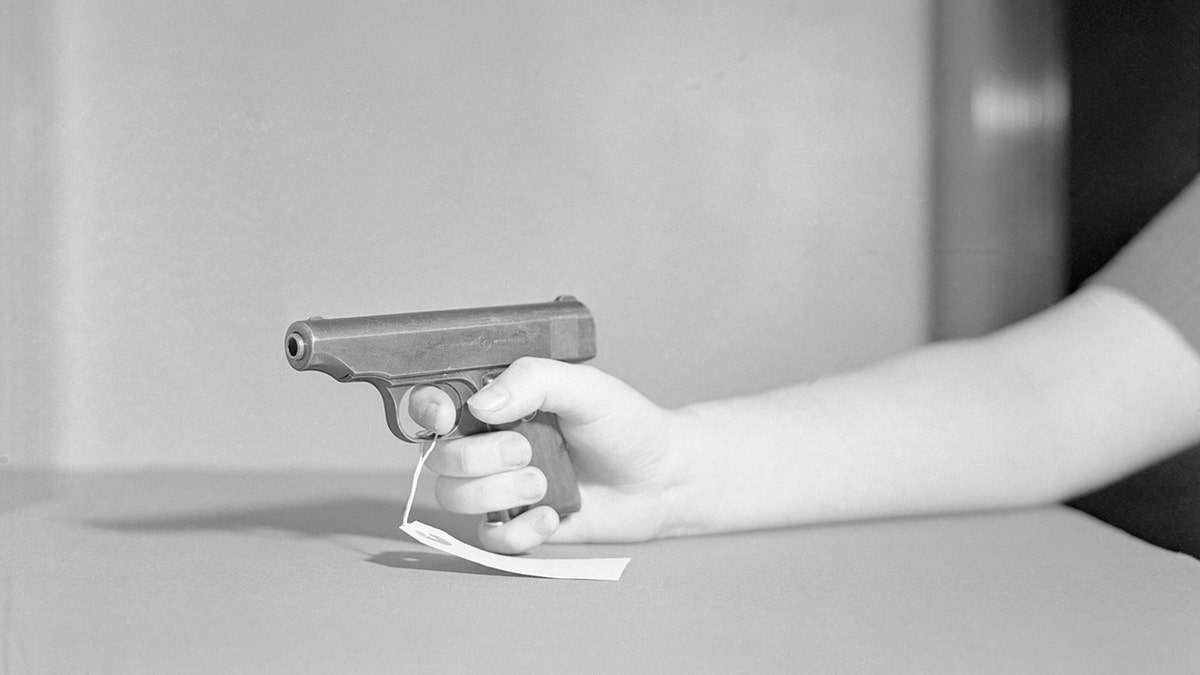
Joan Barry's gun, used as evidence in the Charlie Chaplin paternity case. (Getty Images)
"The gun was in the nightstand between the two [twin] beds where I could reach it with my right hand," she alleged. "Charles made some remark to the effect that having an affair with a gun nearby was a ‘new twist.’"
Chaplin denied the allegation, saying such an act was impossible with a "clearly unbalanced woman wielding a gun" and his sons just down the hall, the book shared.
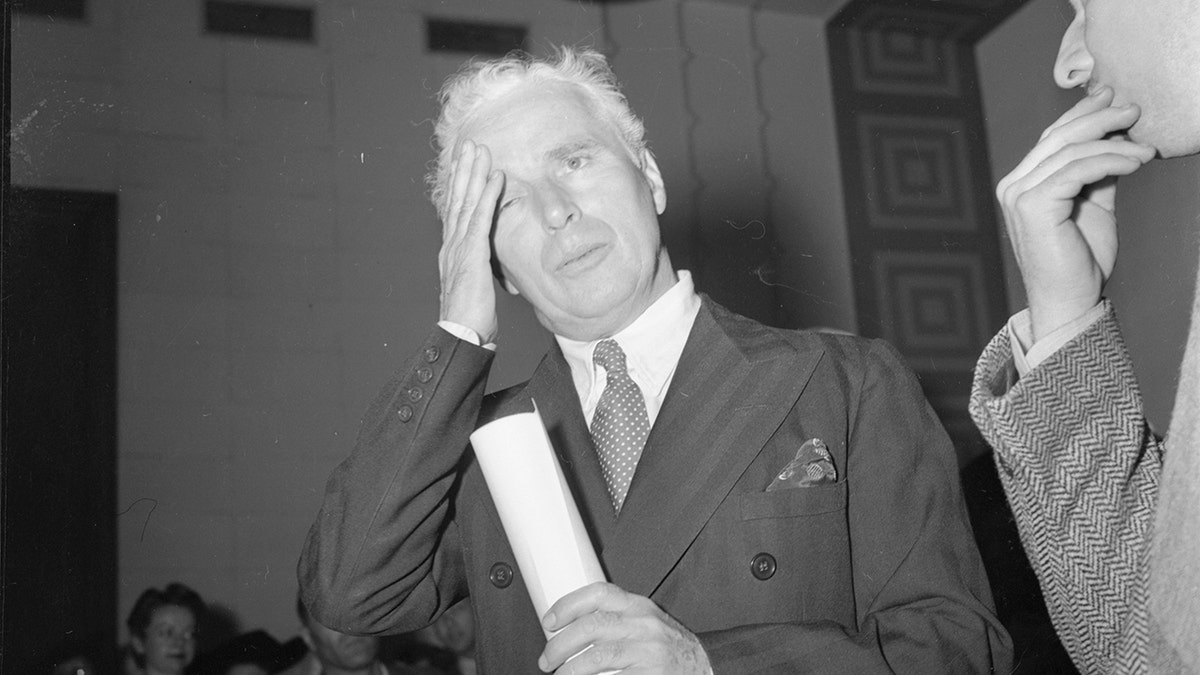
Charlie Chaplin after he broke down and cried while testifying on his behalf. It was the close of the seventh session of his Mann Act trial in Los Angeles federal court. (© Bettmann/CORBIS/Bettmann Archive)
"They were together for about a year," Eyman told Fox News Digital. "She was extremely erratic… She wanted to be a star without necessarily becoming an actor… She [later] told Chaplin she was pregnant, and he was the father. He did the math and there was no way he could have been the father… All the columnists picked up on it, and it became fodder for a lot of papers. He went on trial for transporting a woman across state lines for immoral purposes. He was found innocent of that after the jury deliberated for an hour."

Joan Barry bursts into tears and buries her head on the shoulder of her attorney, Joseph Scott, during the Charlie Chaplin paternity suit. (Getty Images)
"Then there was the paternity suit," Eyman continued. "He took a blood test, which proved as he said that… he was not the father. He lost the paternity case even though a blood test proved he wasn’t the father because a blood test at that point in California was not dispositive and final proof… Even though the blood test rendered him innocent, the jury rendered him guilty. He had to pay child support for a child that wasn’t his. Berry was hospitalized for 10 years because of mental and emotional conditions. She was eventually released and lived a quiet life until her death [in 2007]."
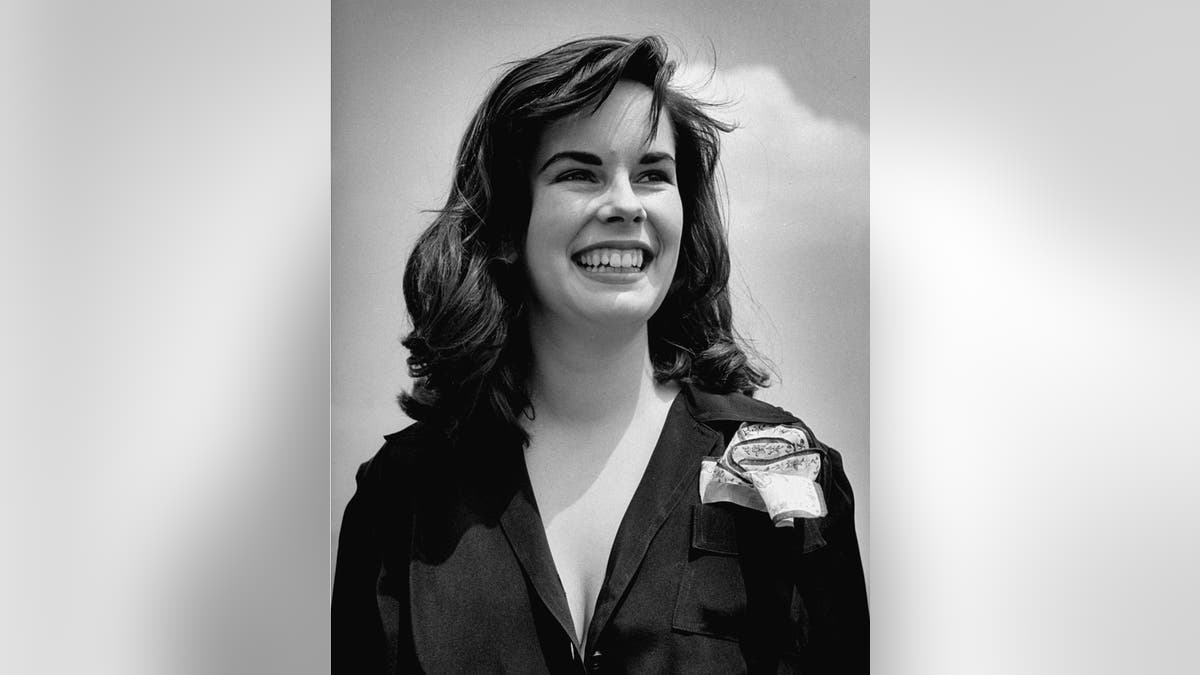
Oona O'Neill's father, playwright Eugene O’Neill, disinherited his daughter following her marriage to Charlie Chaplin. (George Karger/Getty Images)
During the trial, Chaplin married 18-year-old Oona O’Neil. He was 53. While the union stirred even more headlines, the marriage lasted until Chaplin’s death.
CLICK HERE TO SIGN UP FOR THE ENTERTAINMENT NEWSLETTER

Charlie Chaplin and Oona O'Neill married in 1943. The union lasted until his death. (Getty Images)
"They gave each other what they’ve been searching for their entire lives — absolute acceptance," said Eyman. "They gave each other the devotion that neither of them had in their lives from anybody. That’s why the marriage worked… [Sources] told me they were so tightly wrapped with each other, psychologically and emotionally. For them, it was more than two people being in love. Their devotion to each other went beyond that. It was a very happy marriage. She gave Chaplin the happiness he sought."
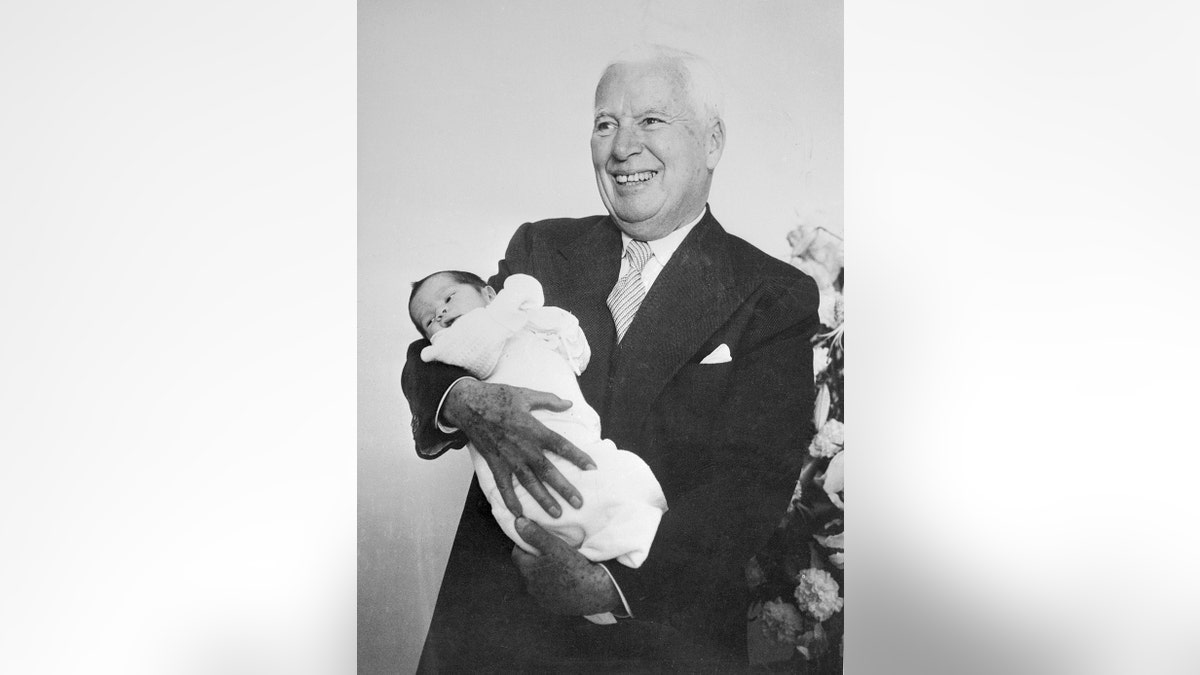
Charlie Chaplin holding his 10th child. The actor and his fourth wife Oona shared eight children. (Getty Images)
"In the book, I described how a year or two after Chaplin died, Oona had to get on an airplane… and she was carrying a glove in her hand," he shared. "She clutched the glove all during the airplane flight. It was one of Charlie’s gloves. She was holding onto that glove as if his hand was still in it."
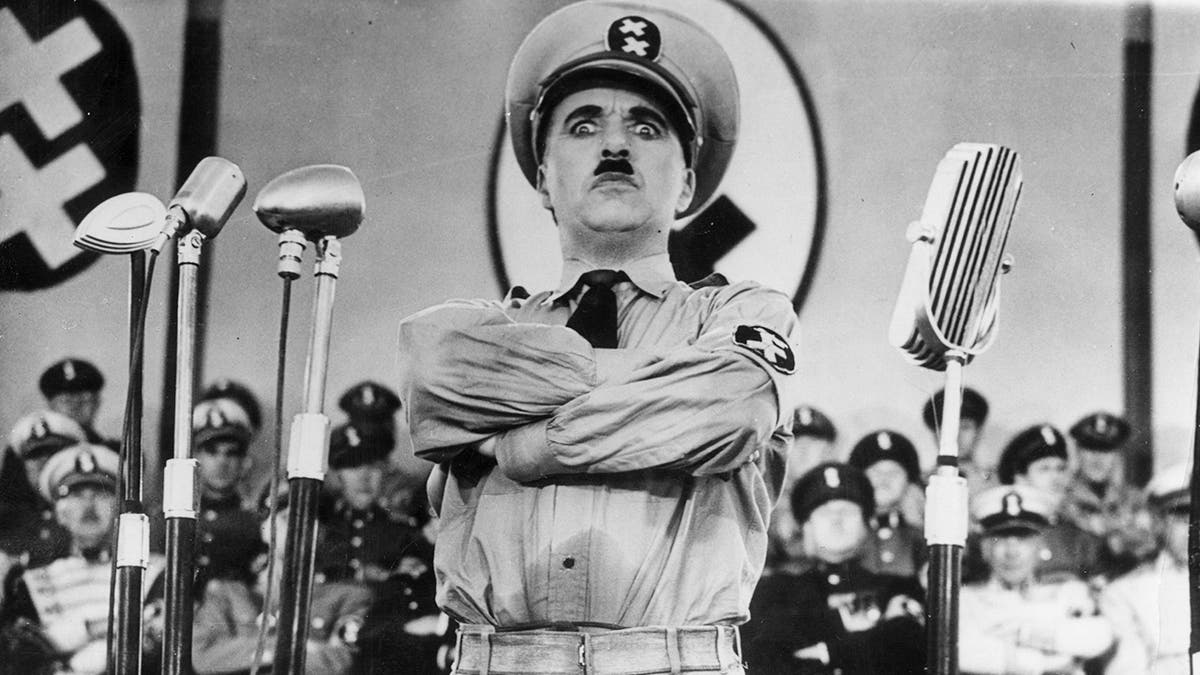
Charlie Chaplin starred in 1940's "The Great Dictator," which satirized Adolf Hitler. The film got him in trouble. (Hulton Archive/Getty Images)
Aside from his personal life, Chaplin’s political outspokenness made him a target of the U.S. government, the book noted. An FBI file on Chaplin alone is nearly 2,000 pages. He was condemned for his alleged Communist ties and was also investigated by the CIA, the Immigration and Naturalization Service, and the House Un-American Activities Committee, among others.

Charlie Chaplin was heavily investigated by the FBI and CIA, among others. (Getty Images)
Few defended Chaplin. And when he went to Britain in 1952, the attorney general announced that he could not reenter the country unless he could prove his "moral worth." Chaplin spent the rest of his life in a 30-room mansion in Switzerland. There, he found refuge from the scrutiny that hounded him in the U.S. Oona always remained by his side.
Eyman said Chaplin was never a member of the Communist Party.

Oona remained devoted to her husband Charlie Chaplin for the rest of his life. (Getty Images)
"His friend Max Eastman… said people didn’t understand that about Chaplin because he was born into poverty, came to America, earned fame and fortune, and yet never became a citizen… Chaplin believed that nationalism and national pride were potentially lethal, and it was the foundation of Nazism, which he unalterably opposed. That’s why he made ‘The Great Dictator,’ one of his bravest films… He held himself aloof from conventional displays of patriotism. At the same time, he admitted that if anybody ever invaded America, he would’ve been the first to take up arms and fight them," said Eyman.
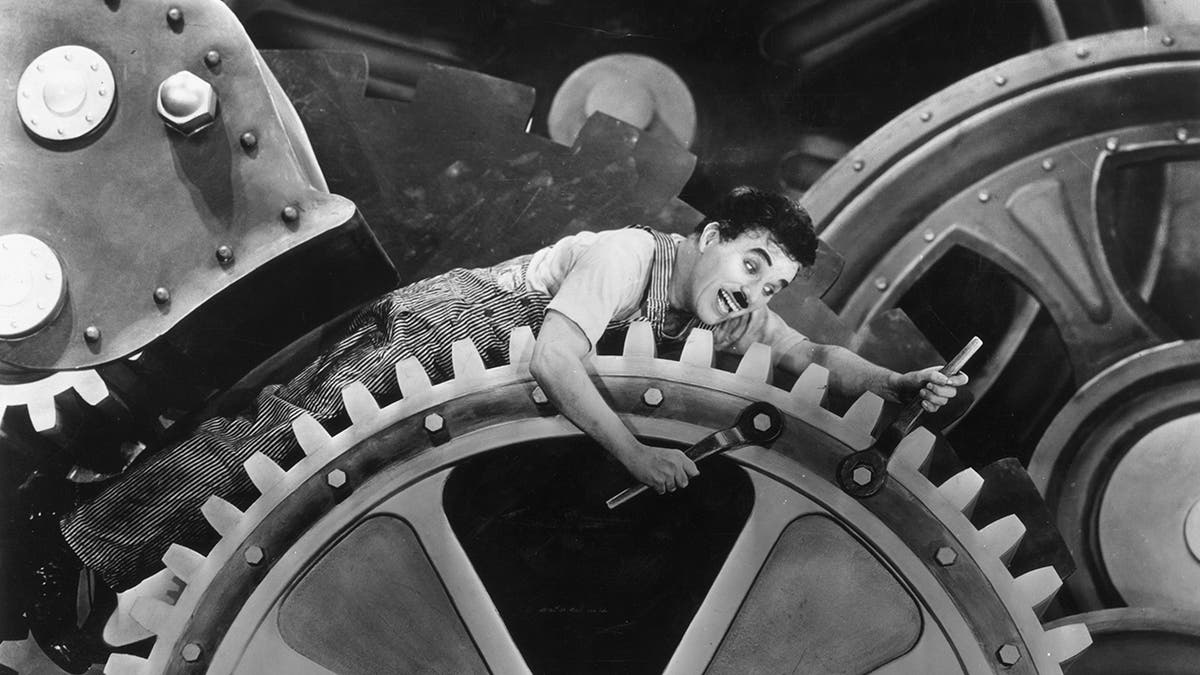
Charlie Chaplin in a still from "Modern Times," circa 1936. (Hulton Archive/Getty Images)
Eyman hopes his book will explore Chaplin as a complex figure in Hollywood history.
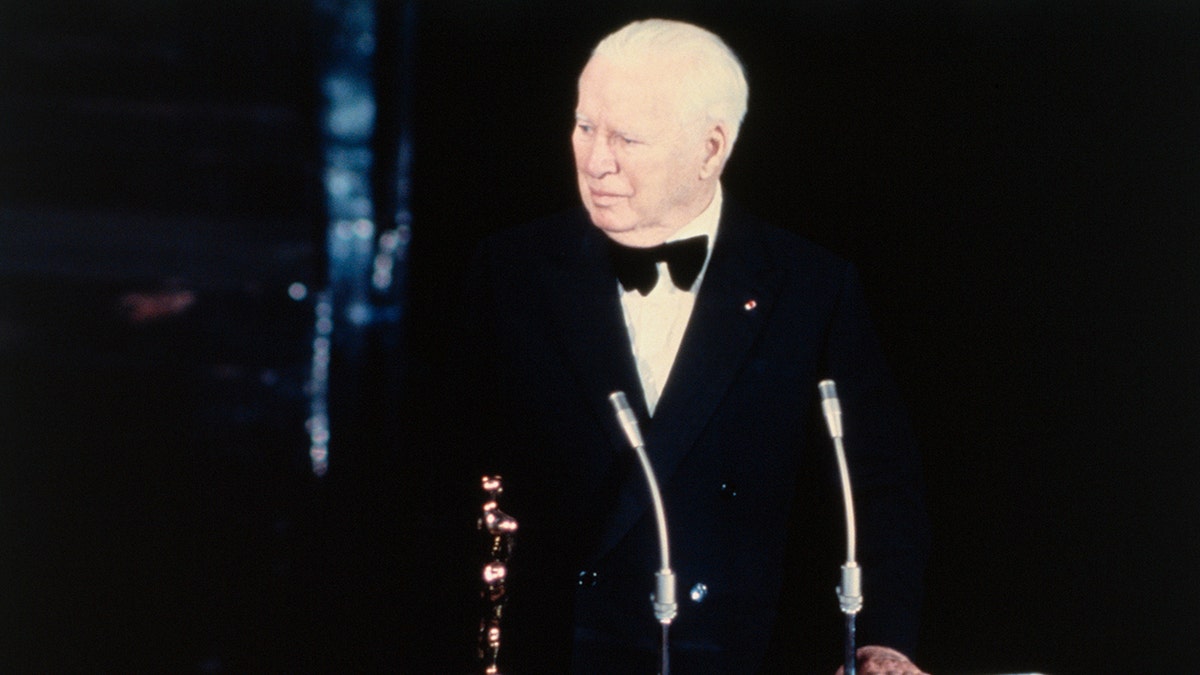
Charlie Chaplin, recipient of an honorary Oscar, makes an acceptance speech at the 44th annual Academy Awards in Los Angeles. (Getty Images)
"This was a stubborn man who made great films and didn’t care what anybody else thought," said Eyman. "That certainly complicated his life."







